How to Fix Corrupted Fonts on Windows 10 and 8
Some users are encountering weird issues after inserting custom fonts in the default Font folder on Windows 10 and Windows 8.1. Most affected users are reporting that all their font letters are replaced with squares and symbols.
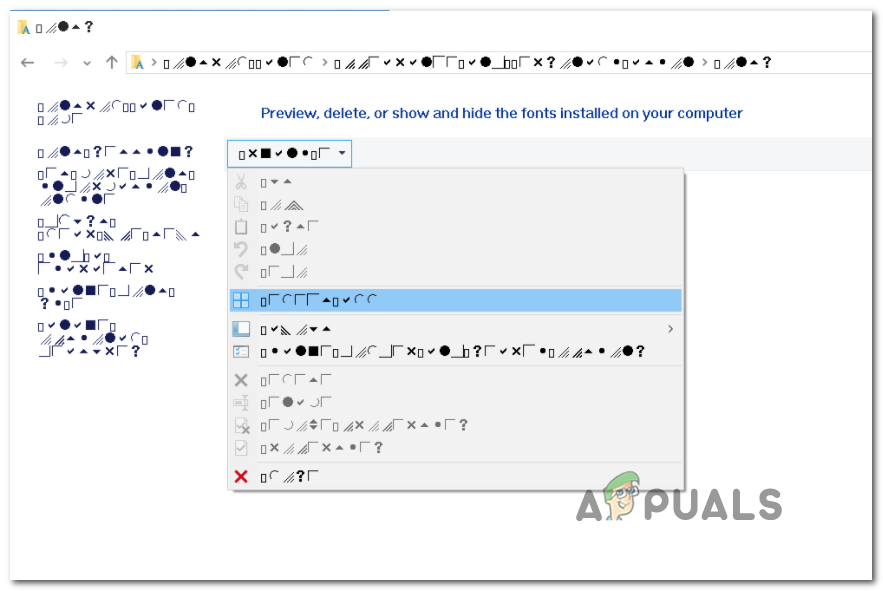
After investigating this issue thoroughly, it turns out that there are several possible culprits that might trigger the apparition of this weird symbol display. Here’s a shortlist of instances that are known to cause this problem:
- An illegible font is selected – In most cases, this problem will occur due to a user-selected font that is not meant to be used as the default choice for the OS. In this case, you should be able to fix the issue by resetting to the default font settings using the Classic Control Panel interface.
- Corrupted Font-related registry key – If you can’t reset your OS fonts using Control Panel or the change doesn’t register, chances are you’re dealing with some kind of corrupted registry key that is storing font information. In this case, you should be able to fix the problem by creating a .reg file capable of overriding every custom font value inside the Registry Editor.
- Corrupted Font cache – According to some affected users, this problem can also occur due to a fon cache issue. In this case, the best approach to fix the problem is to manually rebuild the font cache in Windows 10 after disabling every service that might actively use it. However, in case using the Windows GUI is not an option (menus are not visible), the best approach is to rebuild the font cache via a BAT file that you create from an elevated Notepad window.
- System File Corruption – Under mode severe circumstances, you can expect to see this error occur in situations where your PC is dealing with a severe case of system file corruption. In this case, you should attempt to repair or replace the corrupted files by using a utility like Deployment Image Servicing and Management (DISM) or System File Checker (SFC). If none of them ends up making a difference, your only hope at fixing the issue is to go for a clean install or repair install (in-place repair).
Method 1: Restore Default Font Settings via GUI
If you haven’t tried this already, you should start this troubleshooting guide by restoring every font setting back to their defaults. As long as there isn’t any underlying corruption issue or glitch that might cause this type of behavior, restoring the default font settings back to the default values should take care of the issue.
Here’s a quick guide on resetting your current font settings from the Control Panel menu:
Note: The instructions below should work regardless of your Windows version.
- Press Windows key + R to open up a Run dialog box. Next, type ‘control.exe’ inside the text box and press Enter to open up the classic Control Panel interface.
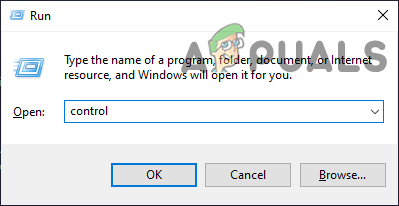
Opening control panel - Inside the classic Control Panel interface, type ‘fonts’ inside the search text (top-right section of the screen) and press Enter. From the list of results, click on Fonts.

Accessing the Fonts menu - From the Fonts screen, click on Font Settings from the vertical menu on the left section of the screen.

Accessing the Font settings menu - Inside the Font settings menu, click on Restore default font settings button and wait for the operation to complete.
- Restart your computer and see if the problem is fixed once the next startup is complete.
If the same problem is still occurring, move down to the next potential fix below.
Method 2: Reset Default Font Settings via Registry Editor
If your font issues are so bad that you possibly follow the instructions above (in Method 1) to reset the font settings to their default values (or you already did this but the same problem remains), you should be able to fix the font corruption issue by created a .reg file capable of resetting the font settings back to their default values.
Some affected users have confirmed that this method finally allowed them to take care of the weird issue that was making their OS display weird characters and symbols.
If you want to follow this guide, follow the instructions below to create a .reg file capable of resetting the fond settings back to their default values:
- Press Windows key + R to open up a Run dialog box. Next, type ‘notepad.exe’ inside the text box and press Ctrl + Shift + Enter to open a Notepad window with admin access.
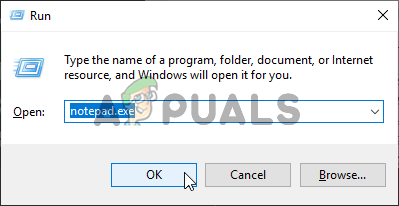
Running Notepad Note: When prompted by the UAC (User Account Control) prompt, click Yes to grant administrative privileges.
- Once you’re inside the elevated Notepad window, type the following code inside the Notepad window:
Windows Registry Editor Version 5.00 [HKEY_LOCAL_MACHINE\SOFTWARE\Microsoft\Windows NT\CurrentVersion\Fonts] "Segoe UI (TrueType)"="segoeui.ttf" "Segoe UI Black (TrueType)"="seguibl.ttf" "Segoe UI Black Italic (TrueType)"="seguibli.ttf" "Segoe UI Bold (TrueType)"="segoeuib.ttf" "Segoe UI Bold Italic (TrueType)"="segoeuiz.ttf" "Segoe UI Emoji (TrueType)"="seguiemj.ttf" "Segoe UI Historic (TrueType)"="seguihis.ttf" "Segoe UI Italic (TrueType)"="segoeuii.ttf" "Segoe UI Light (TrueType)"="segoeuil.ttf" "Segoe UI Light Italic (TrueType)"="seguili.ttf" "Segoe UI Semibold (TrueType)"="seguisb.ttf" "Segoe UI Semibold Italic (TrueType)"="seguisbi.ttf" "Segoe UI Semilight (TrueType)"="segoeuisl.ttf" "Segoe UI Semilight Italic (TrueType)"="seguisli.ttf" "Segoe UI Symbol (TrueType)"="seguisym.ttf" "Segoe MDL2 Assets (TrueType)"="segmdl2.ttf" "Segoe Print (TrueType)"="segoepr.ttf" "Segoe Print Bold (TrueType)"="segoeprb.ttf" "Segoe Script (TrueType)"="segoesc.ttf" "Segoe Script Bold (TrueType)"="segoescb.ttf" [HKEY_LOCAL_MACHINE\SOFTWARE\Microsoft\Windows NT\CurrentVersion\FontSubstitutes] "Segoe UI"=-
- Next, click on File (from the ribbon bar at the top), then click on Save as from the newly appeared context menu.

Saving the Reg script in Notepad - Once you’re inside the Save As menu, navigate to a suitable location where you want to save the .reg file. Next, access the drop-down menu associated with Save as type to All Files. Finally, set any name you want for the newly created file, but make sure to end it with the ‘.reg‘ extension.

- Click Save to make effectively create the reg file.
- Next, navigate to the location where you saved the .reg file, then right-click on it and choose Run as Administrator from the newly appeared context menu.
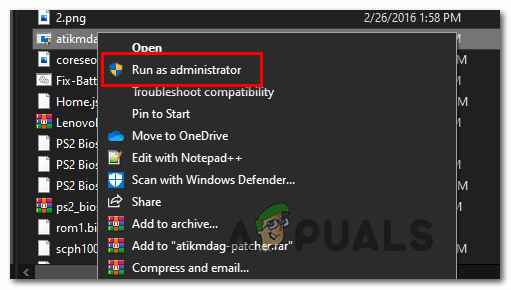
Running .reg file as administrator - Click Yes at the confirmation prompt, then wait for the operation to complete.
Method 3: Manually Rebuild Font Cache in Windows 10
As it turns out, one of the most common instances that will end up triggering this kind of issue is some kind of corruption inside the fond cache of your Windows version. If you’re noticing that the fonts aren’t displaying properly or you’re seeing weird characters instead of letters, you should be able to fix this problem by rebuilding the font cache manually.
This operation was confirmed to be successful by a lot of affected users. You should be able to follow the instructions below whether you’re on Windows 10 or on Windows 8.1.
Keep in mind that by default, the font cache file is stored in the following location:
C:\Windows\ServiceProfiles\LocalService\AppData\Local\FontCache
If you’ll try to access this folder directly, you’ll most likely be able to do it directly as it’s protected by default. However, you should be able to access the folder and manually rebuild the font cache on your Windows installation by following the instructions below:
Note: Before you start rebuilding your font cache, you might want to create a new system restore point just in case something goes wrong.
- Press Windows key + R to open up a Run dialog box. Next, type ‘services.msc’ inside the text box and press Enter to open up the Services screen.
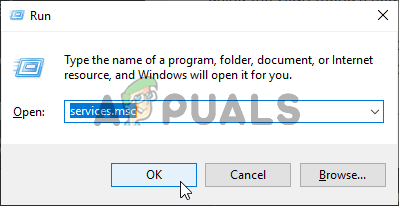
Running Services.msc Note: If you’re prompted by the UAC (User Account Control), click Yes to grant admin access.
- Once you’re inside the Services screen, scroll down through the list of services and locate the Windows Font Cache Service. Next, right-click on it and choose Properties from the context menu.

Accessing the Properties screen of the Windows Font Cache Service - Once you’re inside the Windows Font Cache Service Properties screen, click on the General tab. Next, click on Stop to effectively stop the service, then set the Startup type to Disabled before clicking on Apply.

Changing the Startup type of the Windows Font Cache Service - Next, repeat steps 2 and 3 with the Windows Presentation Foundation Font Cache 3.0.0.0.

Disabling the Windows Presentation Foundation Font Cache 3.0.0.0 - Now that both relevant services are disabled, open File Explorer and navigate to the following folder:
C:\Windows\ServiceProfiles\LocalService\AppData\Local
Note: Since this location is protected by Windows, chances are you won’t be able to simply paste the location in the navigation bar, so you’ll need to double-click each directory to get there.
- When asked to provide the necessary admin permission, click on Continue.

Granting the admin access - Once you’re inside the correct location (C:\Windows\ServiceProfiles\LocalService\AppData\Local\FontCache) press Ctrl + A to select everything inside, then right-click on a selected item and choose Delete from the newly appeared context menu.

Deleting the Font Cache on Windows 10 and Windows 8.1 - Next, return to C:\Windows\ServiceProfiles\LocalService\AppData\Local and delete the FontCache3.0.0.0.dat file.

Deleting the FontCache dat file - Next, use File Explorer to navigate to the following directory and delete th FNTCACHE.DAT file:
C:\Windows\System32\
- After you follow the instructions above, reboot your computer and wait for the next startup to complete.
- Once your computer boots back up, press Windows key + R to open up a Run dialog box. Next, type ‘services.msc’ inside the text box and press Enter to open up the Services screen again.

Running Services.msc - Inside the Services screen, go ahead and set the following services back to an Automatic Startup Type:Windows Font Cache ServiceWindows Presentation Foundation Font Cache 3.0.0.0Note:You can follow steps 2 and 3 for guidance on how to do this.
- That’s it! You have successfully rebuild your font cache in Windows 10 or Windows 8.1.
If you’re looking for a different approach to rebuilding your font cache, follow the instructions below.
Method 4: Rebuilding the Font Cache via BAT File
If the method above looks like a lot of work and you’re familiar with creating and running BAT scripts, you can speed up the process of rebuilding your font cache considerably by using Notepad to create a BAT script and run it in order to essentially perform the steps from Method 1 automatically.
This method is confirmed to work on Windows 10 and Windows 8.1.
If you want to try and repair your font cache via a BAT script, follow the instructions below to create & run one:
- Press Windows key + R to open up a Run dialog box. Inside the text box, type ‘notepad.exe’ and then press Ctrl + Shift + Enter to open up Notepad with admin privileges.

Running Notepad - Once you’re inside the elevated Notepad window, paste the following code inside the text box of Notepad:
@echo off :: Stop and disable "Windows Font Cache Service" service :FontCache sc stop "FontCache" sc config "FontCache" start=disabled sc query FontCache | findstr /I /C:"STOPPED" if not %errorlevel%==0 (goto FontCache) :: Grant access rights to current user for "%WinDir%\ServiceProfiles\LocalService" folder and contents icacls "%WinDir%\ServiceProfiles\LocalService" /grant "%UserName%":F /C /T /Q :: Delete font cache del /A /F /Q "%WinDir%\ServiceProfiles\LocalService\AppData\Local\FontCache\*FontCache*" del /A /F /Q "%WinDir%\System32\FNTCACHE.DAT" :: Enable and start "Windows Font Cache Service" service sc config "FontCache" start=auto sc start "FontCache"
- Next, click on File from the ribbon bar at the top of the screen and click on Save as from the newly appeared context menu.
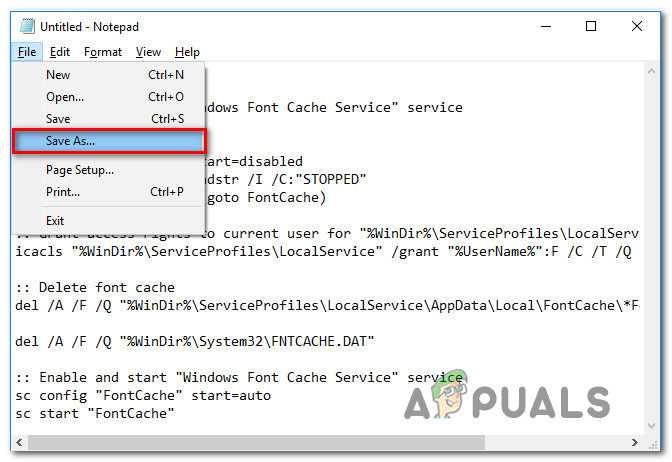
Saving Notepad file with a specific name and file type - Once you’re inside the Save as menu, change the Save as type drop-down menu to All Files (*.*). After you do this, name your newly created file (under File Name) however you want, but make sure you end it with the ‘.bat‘ extension.

Rebuilding the font cache via BAT script - Once the correct extension is configured, hit Save to complete the creation of the script.
- Finally, navigate to the location where you saved the .bat file, right-click on it and choose Run as administrator from the context menu.
- When prompted by the User Account Control (UAC), click Yes to grant administrative privileges.
- Wait until the script is successfully processed, then restart your computer and see if the font issue is fixed at the next computer startup.
If the same problem is still occurring, move down to the next method below.
Method 5: Performing an SFC and DISM Scan
If resetting your font settings and clearing your font cache didn’t fix the problem, chances are you a corrupted Windows file (most likely a font dependency). In this case, you might be able to pinpoint and replace the corrupted files by using a couple of built-in utilities that are known to fix corruption instances – Deployment Image Servicing and Management (DISM) and System File Checker (SFC).
When dealing with corrupted data, you should start with a thorough System File Checker Scan.

Note: This tool is capable of functioning without an internet connection – It uses a locally stored archive to compare potentially corrupted Windows files with healthy equivalents and replace them when necessary. Once you start this operation, don’t interrupt it until it’s complete as you run the risk of producing other underlying corrupted instances.
Once the SFC scan is finished, reboot your computer and see if the same font issue is still persisting after the next startup is complete.
If the font issue is still ongoing, it’s time to perform a DISM scan.
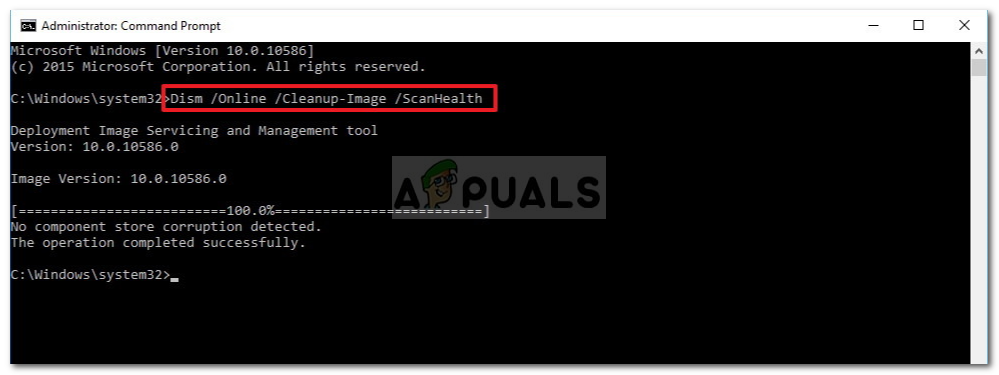
Note: This type of system file repair will require your computer to maintain a stable Internet connection. This is necessary because it uses a sub-component of Windows Update to find and replace corrupted file instances. Because of this, it’s important to maintain internet access throughout this entire operation.
Once the DISM scan is finally complete, restart your computer once again and see if the font display is fixed once the next startup is complete.
If the same problem is still occurring, move down to the next potential fix below.
Method 6: Performing a Repair install or Clean install
If none of the potential fixes above have worked for you, chances are you’re dealing with some kind of system corruption that cannot be resolved conventionally. If this scenario is applicable, you should be able to fix this problem by resetting every OS-related file.
Several users that were also experiencing font issues on Windows 10 and Windows 8.1 have reported that they managed to fix the problem by repair installing or clean installing their Windows installation:
- Clean install – A clean install procedure will allow you to reset every OS file without the need to use a compatible installation media. Another advantage of this method is that you can start the procedure directly from the GUI menu of your windows installation. The main drawback is that unless you back up your data in advance, you’ll lose any valuable data from the OS drive.
- Repair install (in-place repair) – If you’re looking for a focused approach that will only touch your OS files, you should go for a repair install (also known as an in-place repair/upgrade). You will need to use a compatible Windows installation media, but you will be able to keep valuable data from your OS drive (apps, games, personal media, and even user preferences).




